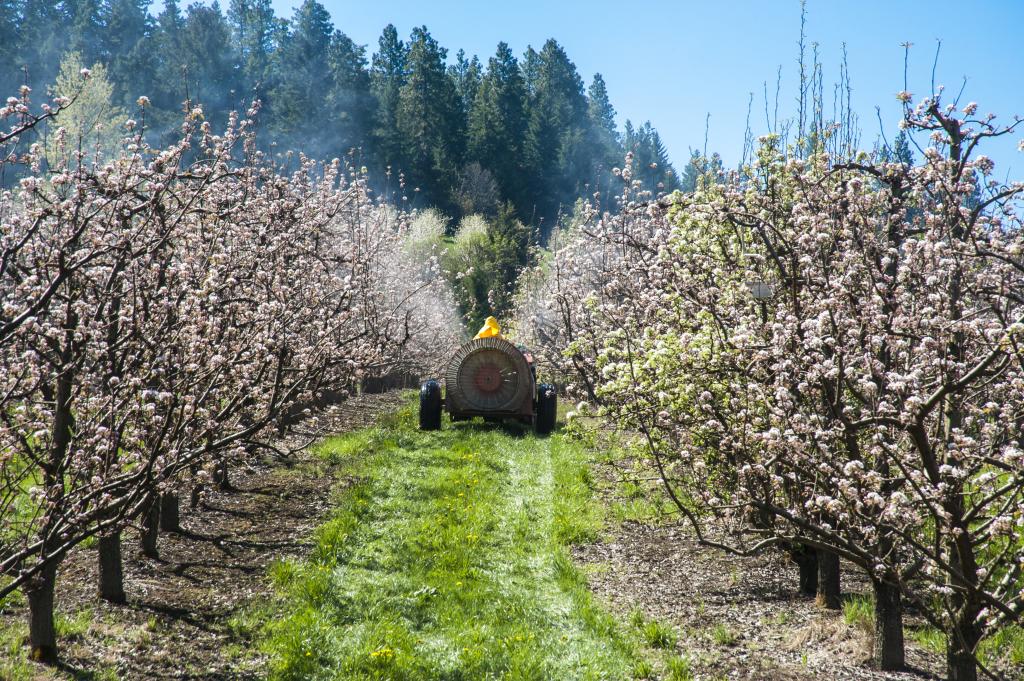Scenarios for exposure of aquatic organisms to plant protection products in the Netherlands
The current Dutch authorisation procedure for calculating the exposure of aquatic organisms to plant protection products needs to be revised. For this reason, a new exposure assessment methodology for various crops and application methods has been developed. This report describes the methodology for upward and sideways spraying in Dutch fruit crops.

Mitigation options
The new procedure calculates the exposure concentration based on a statistical distribution of the exposure concentration in all relevant Dutch water courses. The methodology results in a so-called 90th-percentile exposure concentration considering all watercourses alongside fields grown with fruit crops. The new methodology takes input of plant protection products by spray drift, drainage and atmospheric deposition into account. An important part of the new methodology is the option to mitigate spray drift deposition by using drift-reducing technologies in a higher spray drift reducing class or by including a wider crop-free buffer zone.
Decision Tree Surface Water
The scenario reported in this report has been delivered within the framework of the so-called Decision Tree Surface Water. This project was inititiated, because the current Dutch authorisation procedure has shortcomings. These shortcomings, together with other problems, may lead to exceedances of water quality standards. See the PBL-report A closer look at integrated pest management for details.
Authors
Specifications
- Publication title
- Scenarios for exposure of aquatic organisms to plant protection products in the Netherlands
- Publication subtitle
- Part 2: Sideways and upward spraying in Dutch fruit crops (final report)
- Publication date
- 24 September 2021
- Publication type
- Report
- Page count
- 117
- DOI
- 10.18174/54965
- Publication language
- English
- Magazine
- Wageningen Environmental Research Report 3100
- ISSN
- 1566-7197
- Product number
- 4725